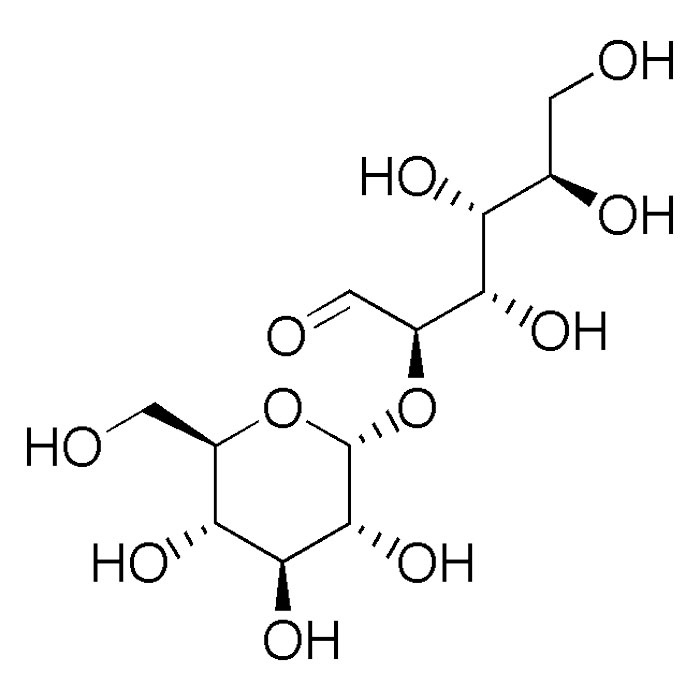
Caractéristiques du Kojibiose
-
Identification du kojibiose :
- Nom UICPA : (2R,3S,4R,5R)-3,4,5,6-tetrahydroxy-2- [(2R,3R,4S,5S,6R)-3,4,5-trihydroxy-6- (hydroxymethyl)oxan-2-yl]oxyhexanal
- Synonymes : 2-alpha-D-glucosyl-D-glucose, 2-O-alpha-D- Glucopyranosyl-D-glucose, 2-O-alpha-d -glucosyl-glucose, α-D-Glc-(1↔2)-D-Glc
- N° CAS : 2140-29-6
- N° ECHA : –
- N° CE : –
- Code ATC : –
- PubChem : 164939
- ChEBI : 33020
- FEMA : –
- SMILES :Canonical = C(C1C(C(C(C(O1)OC(C=O)C(C(C(CO)O)O)O)O)O)O)O
Isomeric = C([C@@H]1[C@H]([C@@H]([C@H]([C@H](O1) O[C@@H](C=O)[C@H]([C@@H]([C@@H](CO)O) O)O)O)O)O)O - InChl : 1S/C12H22O11/c13-1-4(16)7(17)8(18)5(2-14) 22-12-11(21)10(20)9(19)6(3-15)23-12/ h2,4-13,15-21H,1,3H2/t4-,5+,6-,7-,8-,9 -,10+,11-,12+/m1/s1
Propriétés chimiques :
- Formule : C12H22O11
- Masse molaire : 342,30 g/mol
- pKa : –
Propriétés physiques :
- T° Fusion : 187 à 188 °C
- Solubilité : soluble dans l’eau, dans le méthanol et dans le DMSO
Propriétés biochimiques :
- Codons : –
- pH isoélectrique : –
- Acide aminé essentiel : –
- Occurrence chez les vertébrés : –
Propriétés optiques :
- Pouvoir rotatoire : –
Précautions :
- SIMDUT : –